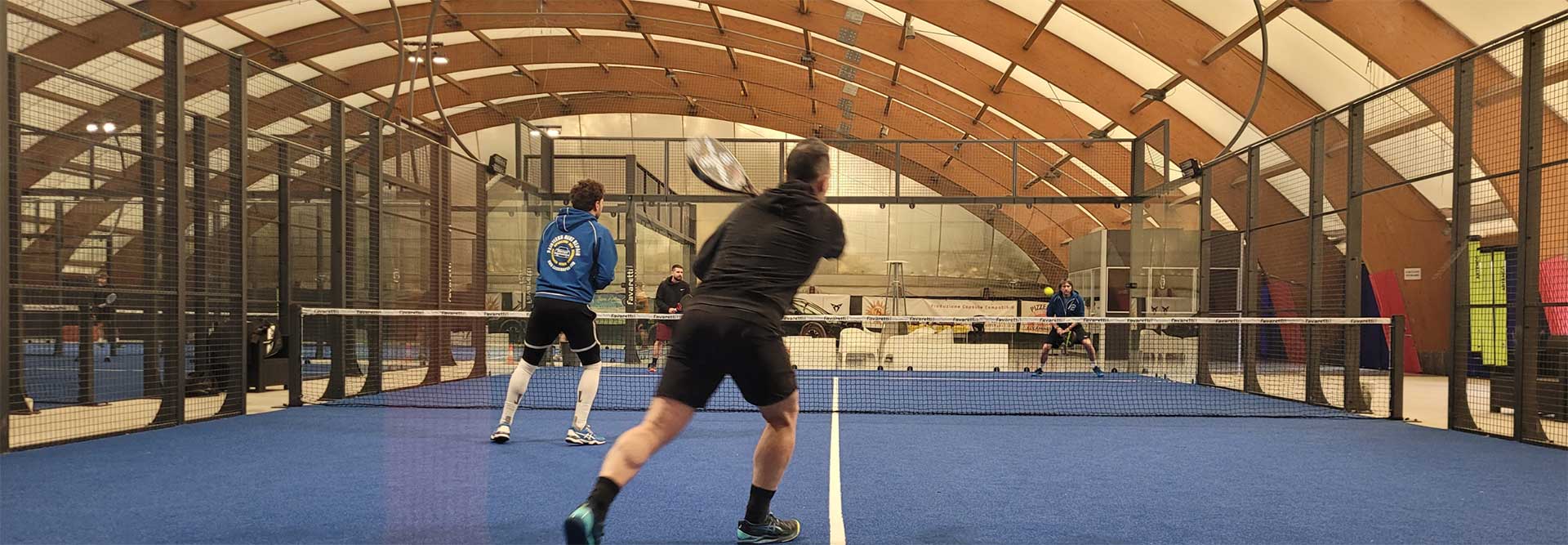Padel is a sport that knows no seasons. With more than 10,000 courts spread throughout the country, of which about 20 percent are indoor, the growing popularity of the sport is evident. The demand for facilities suitable for the practice of padel is constantly increasing, reflecting the enthusiasm and passion of Italians for this activity.
What are the differences between outdoor and indoor padel courts? And how can these differences influence the decision to invest in either?
Favaretti Padel’s guide to choosing between indoor and outdoor courts
The choice between an indoor and an outdoor padel court thus depends on many factors, including local climate, available budget, business goals, and customer preferences. Favaretti Padel offers comprehensive support to investors, assisting them at all stages of the project:
- Feasibility analysis: assessment of local conditions, market and potential returns on investment.
- Design and construction: advice on design, materials and construction techniques to ensure the highest quality and durability of the court.
- Supply of accessories: supply of everything needed to complete the padel court, including lighting, flooring, and nets.
- Maintenance and after-sales service: ongoing maintenance programs and support to ensure that the court remains in optimal condition.
Differences between outdoor and indoor courts
When it comes to investing in padel courts, it is critical to understand the differences between outdoor and indoor facilities, as these features can significantly affect the player experience and return on investment.
| Feature | Outdoor court | Indoor court |
| Mantle | ✓Synthetic grass with weather resistance | ✓Synthetic grass with increased longevity due to weather protection |
| Structure | ✓Hot galvanizing is essential to prevent rusting and premature decay of metal structures. The court must be designed to withstand wind forces | ✓The padel court must comply with construction regulations |
| Cover | ✓Absent, the field is exposed to the elements. | ✓Tensostructures or masonry structures for complete protection from the elements |
Benefits of investing in indoor padel
Indoor padel courts offer a number of benefits that make them an attractive choice for many investors and managers of sports facilities. Some of the main benefits associated with indoor padel courts are outlined below.
- Continuity of play: Indoor courts offer uninterrupted play, protected from adverse weather conditions. This enhances the player experience and increases revenue potential for operators through increased attendance and customer retention.
- Improved visibility and playing conditions: On indoor courts, well-designed artificial lighting eliminates shadows and provides optimal visibility. This promotes more precise and strategic play. In addition, the aforementioned absence of variables such as wind and beating sun makes indoor play more predictable and safe.
- Reduced maintenance: Padel covers protect the turf and equipment from the elements, reducing maintenance costs and extending the life of the facilities. This represents a significant economic advantage in the long run.
Tensile structures vs. masonry structures: which one to choose for indoor courts?
Opting for a tensile structure rather than a masonry structure offers several advantages:
- Easier permits : Obtaining permits for a tensile structure is generally easier and faster.
- Lightweight foundations : tensile structures require less demanding foundations than masonry structures.
- Lower costs: the construction costs of a tensile structure are significantly lower than those of a masonry structure.
- Fast assembly time: erection of a tensile structure is very fast, reducing camp downtime.
- Customizable accessories : numerous accessories are available to customize and enhance the arena, making it unique and functional.
- Design freedom: tensile structures offer extensive design possibilities, with uncluttered widths in excess of 60 meters.
Padel covers must necessarily be designed and manufactured in compliance with construction regulations (NTC2018). Only a certified work that fully complies with the technical requirements can allow the operator to focus on his business without any risks or problems!
The same advantages are not found for structures designed as “temporary and itinerant”: which do not offer any resistance to the weather (snow,wind and earthquake) endangering the users of the circle. Such a choice, dictated by lower initial costs but at the total expense of safety, can lead to serious inconvenience for the club and the manager.
Benefits of investing in outdoor padel
Investing in outdoor padel courts has a number of specific advantages that can appeal to both investors and players. Although there are some challenges associated with this choice, the benefits offered by outdoor courts can be significant. The main advantages of outdoor padel courts are explored below.
- Lower construction costs: Generally, building an outdoor padel court requires a lower initial investment than an indoor court. Lower structural and roofing requirements save on initial costs.
- Playing sensation: Many players prefer the feeling of playing outdoors, enjoying the natural environment and when the weather is favorable. The ability to execute higher lobs without height limitations can be a strategic element appreciated by padel enthusiasts.
Economic considerations: potential gains
Below, the benefits and challenges of each option are examined to help make an informed decision.
Indoor courts: Despite a higher initial investment, indoor courts offer long-term benefits that often outweigh the costs. The ability to use the field continuously, regardless of weather conditions, results in greater revenue potential. In Italy, with more than 80 rainy days per year on average, outdoor fields often go unused, causing lost revenue. In addition, continuity of play improves customer loyalty and revenue, which is essential for the growth of the sport.
Outdoor Fields: Although outdoor fields are a less expensive solution initially, they can pose greater financial risks in the long run. Varying weather conditions can reduce the effective use time of the field, negatively impacting revenue.
